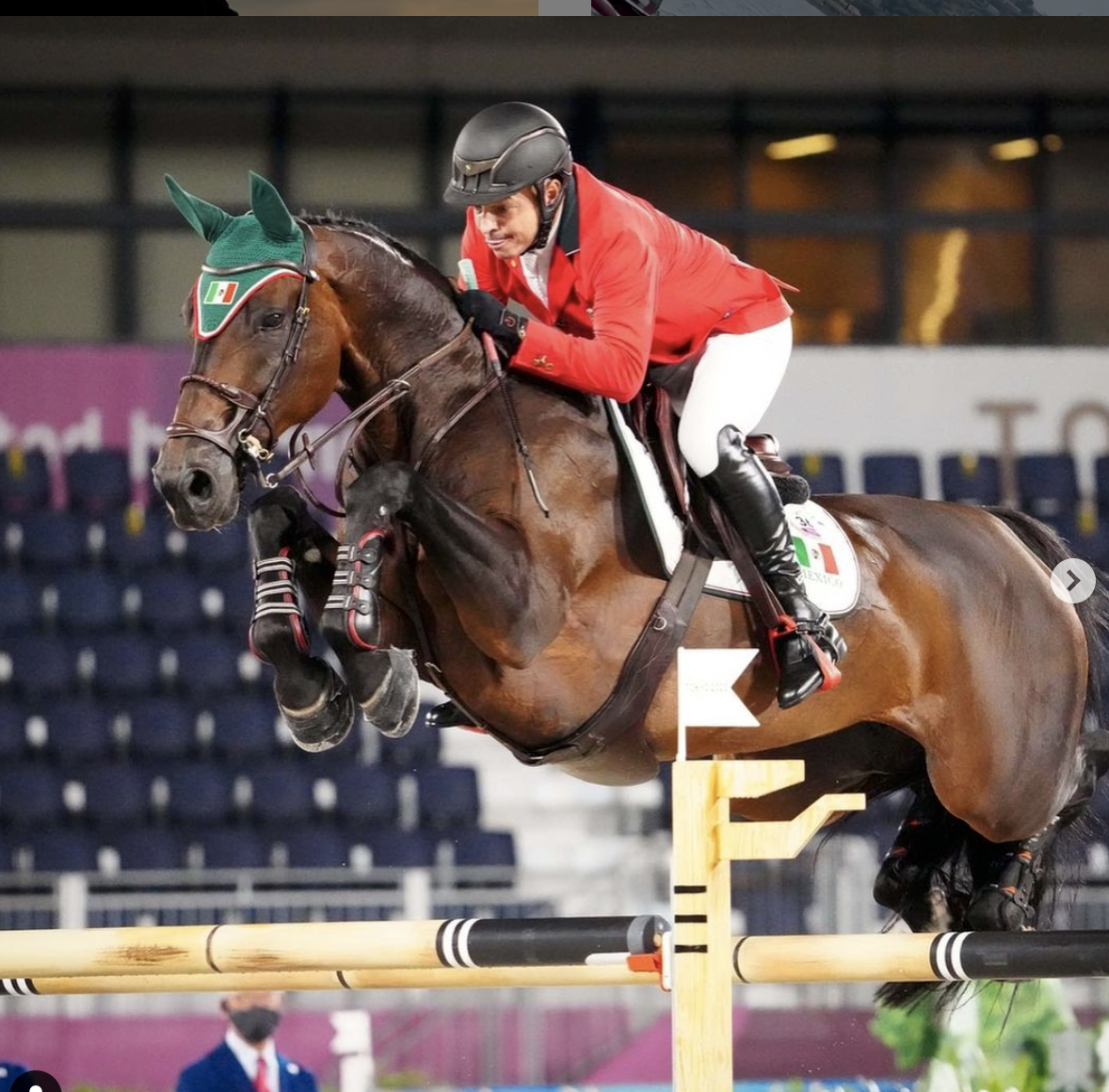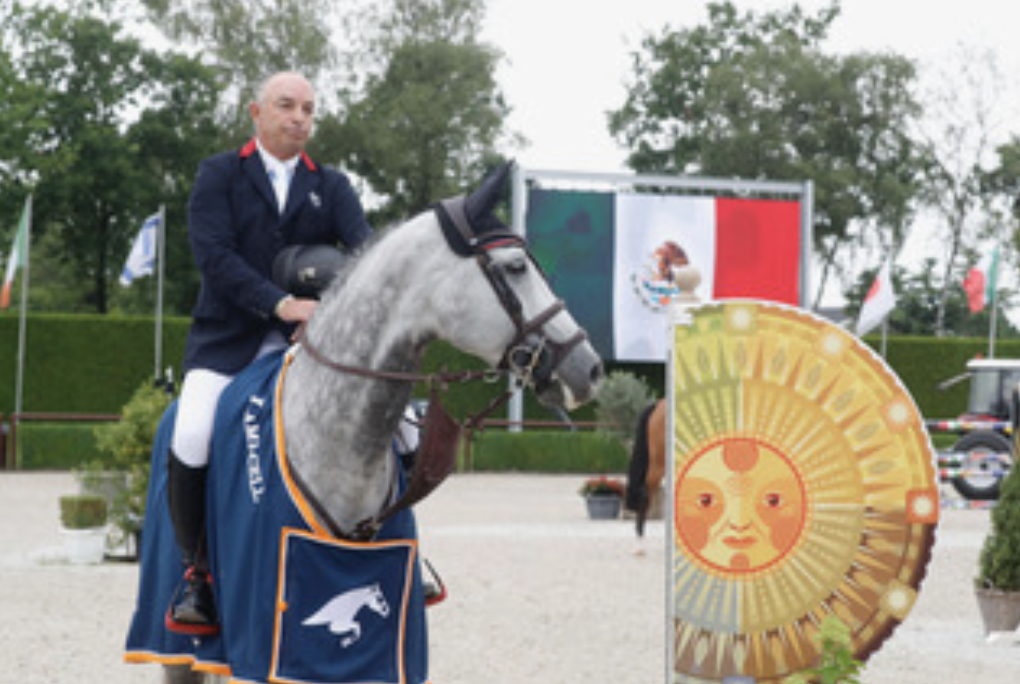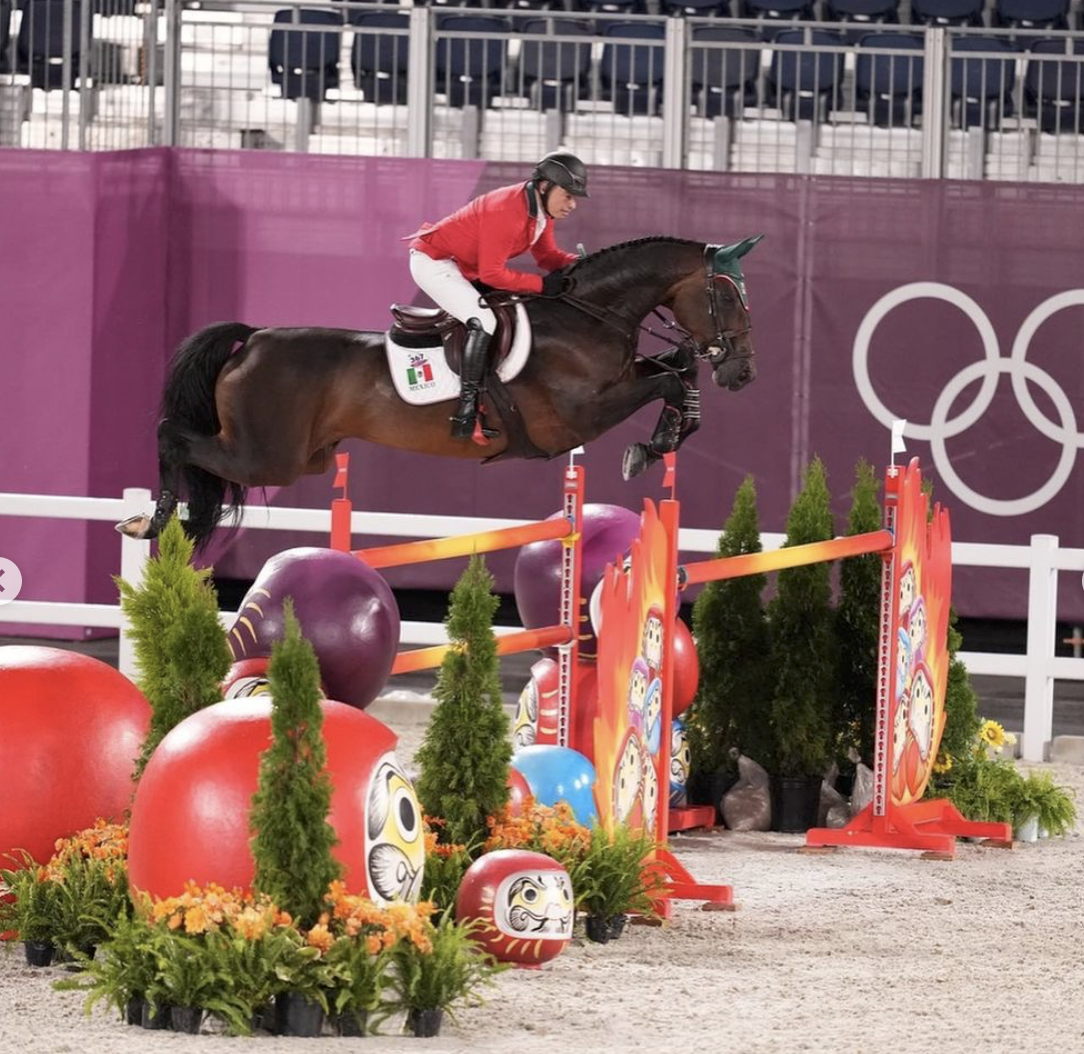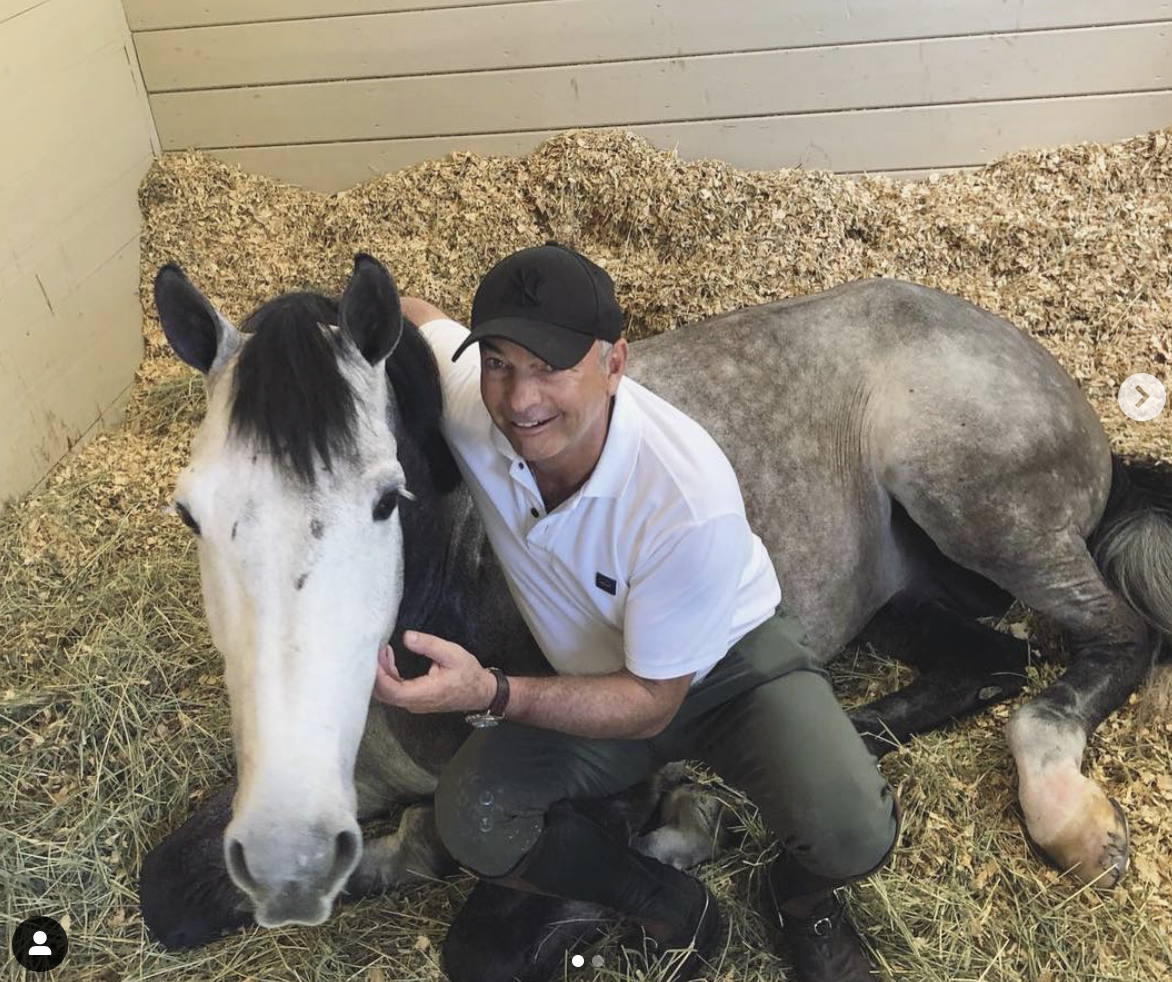
Enrique Gonzalez on Finding Prospective Horses
Blog
Enrique Gonzalez on Finding Prospective Horses
Enrique Gonzalez finds prospective young horses, educates them, and competes successfully at the highest levels. He co-owns and operates E2 Stables in San Diego with Eduardo Menezes, and they continuously import horses from Europe and South America while competing across the United States and internationally.
Enrique is known as La Pajara, or The Bird, and is at the top of the showjumping game, having recently returned from representing Mexico at the Olympics in Tokyo with Chacna, where they placed 44th in the individual qualifier’s competitive field with a nice, clean round. E2 Stables focuses on global sport horse sales and developing successful horse and rider partnerships for show jumping. Finding, educating, and competing prospective horses is a hallmark of the services offered by E2 Stables.

Chacna and Enrique at the Tokyo Olympics. (Photo: Sportfot)
Tokyo was not Enrique’s first trip to the Olympics. He rode Frida in the 2008 Olympics in Hong Kong, and he’s guided three horses (Chacna, 2018; Quilebo Du Tillard, 2014; and Pegaso Eclipse, 2002) to the FEI World Equestrian Games. He also competed on Loreta in the 2010 World Championships and rode Chacna to a team silver at the 2019 Continental Games in Lima, Peru.
Enrique has carefully developed countless other young horses into top show jumping mounts. He previously founded the La Puerta Equestrian Club and the Santa Clara Show Jumpers Club, both in Mexico, and currently serves on the North American Riders Group board of directors, helping grow equestrian sports. Cristobol Collado, his stepson, is continuing the family tradition and competing in U25 Developing Rider Division.
In this three-part series, Enrique shares with us how he finds the horse educates the horse, and then competes with them. First, we focus on finding prospective horses.
The Search Criteria
It’s important to know what age you are looking to buy before initiating your search for prospective young horses. Knowing the age or age range you want, and assuming you already know the division and other characteristics, you can begin looking at available horses. Enrique notes that the younger horses are harder to judge but have a lower price point. His experience finding prospective horses has made him an excellent judge of young horses for himself and clients.
“Once I know the age I’m looking for, I start with my contacts and see what they have to offer,” he says. “It’s hard to find prospective horses yourself, especially if you don’t live in Europe where most of the young horses come from.”
Looking at prospective horses is more than just their conformation and athletic ability. It’s about feeling and that special spark – the attitude and will to win the horse has that sets them apart from others. Enrique has an innate feeling for talented horses, and this allows him to purchase horses that are sometimes overlooked by other trainers. He also has extensive pedigree knowledge and analyzes bloodlines during his search.
Prospective horses are evaluated for their traits and qualities. “A good canter is definitely one of the main things you want,” he says. “The horses also need balance, rideability, and then more specific in their scope and carefulness.” Soundness and clean x-rays are non-negotiables in prospective horses, especially if the horse is being bought to bring up through the ranks and re-sold.

Enrique and Parrandero, owned by Enrique and Alice Lawaetz, winning the 2* 1.40 at Valkenswaard on July 16, 2021. Photo: Monica Decima Photography.
The Test Ride
Next, comes the test ride, where riders determine if the horse is the right fit and has the potential to move up through the ranks. Enrique begins by watching the horse with their current rider, that way when he gets on, he knows more of what he wants to test and uses his time wisely. Enrique rides some flatwork, lead changes, and gears.
“I’m looking to see how reactive the horse is to my leg, the mouth if he turns right and left,” Enrique says. “Then you start jumping, a vertical, then an oxer, after that a combination and maybe a line. Put it all together and make a small course.”
Enrique usually test rides a horse (one, two, or more times?) before deciding whether to purchase the horse. Test riding isn’t about finding a perfect horse; rather one that can be educated and developed to reach its full potential. This is where the feeling comes back in. A skilled trainer can educate a difficult horse, whether strong-willed or with a bad habit, but you must be able to feel the potential and work with the horse. Once purchased, the horse moves into the education phase in his program, and then on to the competition.
The Horses
Countless test rides have developed Enrique’s astute knowledge and feeling for a good horse with the potential to compete at the highest levels. Horses that Enrique has trained, shown, and sold to fellow professionals and amateurs are testimonials of his expertise.
Chacna, a 2007 Hanoverian mare, is well known in the showjumping world and successful at the highest levels with Enrique. “Chacna is maybe the best of all the horses I’ve purchased,” he says. “She is so special, but so good and a fighter. She competed at WEG, the Pan Am Games, won the Nation’s Cup in Dublin, won the 4* Grand Prix in Samorin, was second in the Queen’s Cup, 4th in the National Grand Prix, and has many more wins around the world. The cherry on the cake was competing her at this year’s Olympics in Tokyo.”

Chacna and Enrique at the Tokyo Olympics. (Photo: Sportfot)
Cantinero is a 2002 Belgian Warmblood gelding that Enrique purchased and developed before selling him to Henrik Von Eckermann of Sweden. “Cantinero was so careful, his rideability was difficult but his quality made him so good.” Henrik and Cantinero won the global champions tour Grand Prix and individual and team bronze in the 2014 FEI Nation’s Cup Final.
Forastero was another memorable horse that Enrique purchased and trained, “Forastero was one of the most difficult horses I ever produced. But he was a winner. He gave Jaime Azcarrga of Mexico so many wins on the international level of the sport.”
Enrique’s other famous horses include Quilebo Du Tillard who competed at WEG; Criptonite, a Pan Am medal winner; Pegaso Eclipse, another WEG horse; Katina, and Guajillo, both Central American Games medalists; Frida, his 2008 Olympic mount; Victor, Mujeriego, and many others.
“I could keep going with horses I sold to clients that have been special,” he says. “All of them are special to me and it’s been a pleasure working with each of them at their own time.”

Enrique and Parrandero
In the next article in this series, Enrique will share his strategies for educating the horse.
